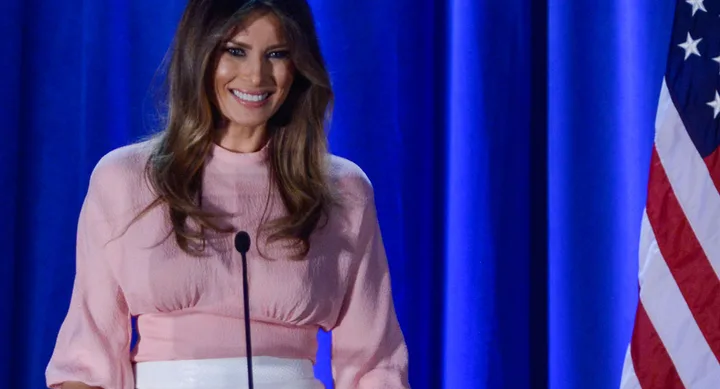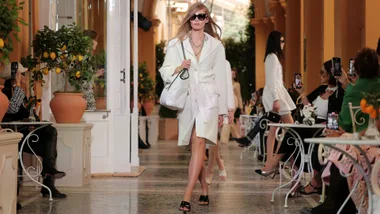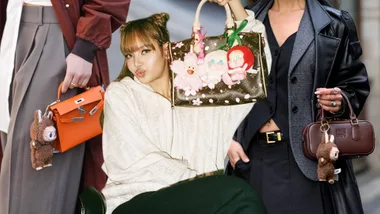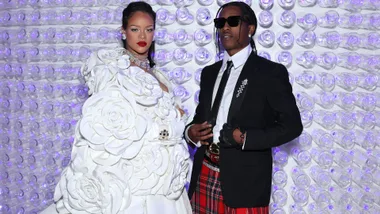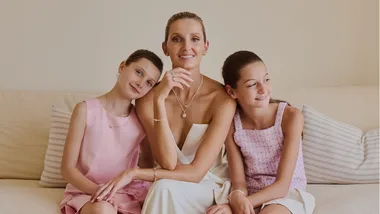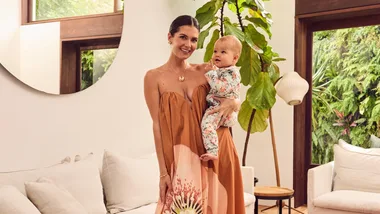Where there are First Ladies, so too there are beautiful gowns. Thus it was, since the days of Jackie O and Nancy Reagan, and thus it ever shall be.
So when Sophie Theallet, a CFDA award-winning designer, penned an open letter denouncing the President elect and his wife, and vowing never to dress Melania Trump, the decision demands to be unpacked.
Theallet – who has previously dressed Michelle Obama in an elegant sundress with a colourful floral print – wrote that her reasons were purely ideological.
RELATED: Tommy Hilfiger Weighs In On The Melania Trump Fashion Boycott
“The Sophie Theallet brand stands against all discrimination and prejudice,” the designer, who hails from France, said. “As one who celebrates and strives for diversity, individual freedom, and respect for all lifestyles, I will not participate in dressing or associate myself in any way with the next First Lady. The rhetoric of racism, sexism and xenophobia unleashed by her husband’s presidential campaign are incompatible with the shared values we live by.”
Theallet went on to urge other designers to boycott the Trumps as well. “Integrity is our only true currency,” she noted.
It was a bold move from a member of the American fashion elite, not to mention the first of its kind. Although no US designer has officially “dressed” – as in, gifted or sold clothes personally – to Melania Trump, several of them had come out in clear support for her husband’s opponent Hillary Clinton.
An army of American designers, all of whom had worked closely with Michelle Obama over the eight year term of her husband’s Presidency, including Marc Jacobs, Thakoon and Diane von Furstenberg all created unique tee shirts for Clinton’s campaign. All together, the fashion industry donated an incredible $628,305 to her campaign. Clinton herself spent her two year campaigning period almost exclusively in American designers, from Michael Kors to Tory Burch, Vera Wang, Donna Karan, Calvin Klein and Ralph Lauren.

The latter was practically Clinton’s dresser in chief, and the architect of her now-iconic navy blue pantsuit at the second debate, and the bright red two-piece she sported at the first debate. He also personally designed, one-on-one with Clinton, the royal blue pantsuit she wore for her first day of campaigning in 2015.
But Clinton’s not the only woman to wear Ralph Lauren on the campaign trail. On the night of the election, while her husband was giving his victory speech in the wee hours of the morning, Melania Trump’s tawny limbs and glossy hair were resplendent in a one-shouldered cream jumpsuit by the brand, which she picked up off the rack for a cool $3,999.
Off the rack. Lauren did not give her that look, and she did not work closely with his design team to create the jumpsuit. She paid for it herself and bought it from one of the brand’s boutiques or a department store in her adopted hometown of New York. Maybe even the Ralph Lauren shop that’s at the foot of Trump Tower on Fifth Avenue.
Trump’s been buying her clothes a lot, actually. She bought the now-infamous Gucci pussy bow blouse from Net-A-Porter, and she bought the $3,000 trumpet-sleeved Roksanda Ilincic dress that she wore to give her Michelle Obama speech at the Republican National Convention in July.
Both of those pieces sold out within days of Trump wearing them.
(Her aesthetic, Marcus Wainwright, chief executive of Rag & Bone told The New York Times, can only be described as “looking rich”).
Selling out very expensive clothes is an occupational hazard when a First Lady wears something. It’s why Sophie Theallet’s decision not to dress Trump is one that could potentially cost her business hundreds of thousands of dollars.
We’re not saying Theallet was wrong to say she won’t dress Trump. In fact, we find her words galvanising. Because it’s a decision she has made knowing full well how much this is going to wipe off her bottom line. Dressing the First Lady is a sure-fire way to move product. When Michelle Obama wore something, it sold. Whether it was an affordable Gap frock or a sleek gown by Tom Ford, it sold. And when Michelle Obama wore something, she put that designer on the map. Without her, there’s a very good chance we might never have been introduced so spectacularly to then-little known brands like Jason Wu, Thakoon, Altuzarra, Tanya Taylor, Thom Browne or, yes, even Sophie Theallet.
Even seasoned fashion pros like Riccardo Tisci, the creative director at Givenchy, went weak at the knees when it came to dressing Obama.
“There are really only a few moments that gave me goose bumps like that,” he told Vogue. “It made me feel like a child; I was genuinely so happy. Not specifically on a placement point of view, but more because she is like a dream woman, whose elegance and kind soul make her otherworldly… I will miss her… Such a role model.”
And then there’s this, from Jason Wu, on dressing Obama for the 2009 inauguration ball in a frothy, white tulle confection: “It was an incredibly emotional, life-changing moment for me – I knew that my life and career would never be the same again. Global interest for the Jason Wu brand peaked immediately and yielded tremendous recognition and publicity that normally would take years to grow as a brand.”
At the time of the Republican National Convention, Trump’s team told the media that she wasn’t working with any designers and would purchase all of her wardrobe herself. Will this last?
While several news outlets have come out in force, saying they don’t want to normalise the Trump presidency and will refuse to fawn over Trump’s outfits – as it must be noted, the fashion media have for Obama – the designers themselves have been more, well, let’s say diplomatic, for want of a better word.
Diane Von Furstenburg said that the fashion industry should “do what we can” to accept the election results and work with the new President and his family.
Joseph Altuzarra told The New York Times that he doesn’t “want to not dress people I disagree with.” Wainwright added that “it would be hypocritical to say no to dressing a Trump. If we say we are about inclusivity and making American manufacturing great again, then we have to put that before personal political beliefs.”
Sophie Theallet would disagree. It will be interesting to see how many other designers are with her.
